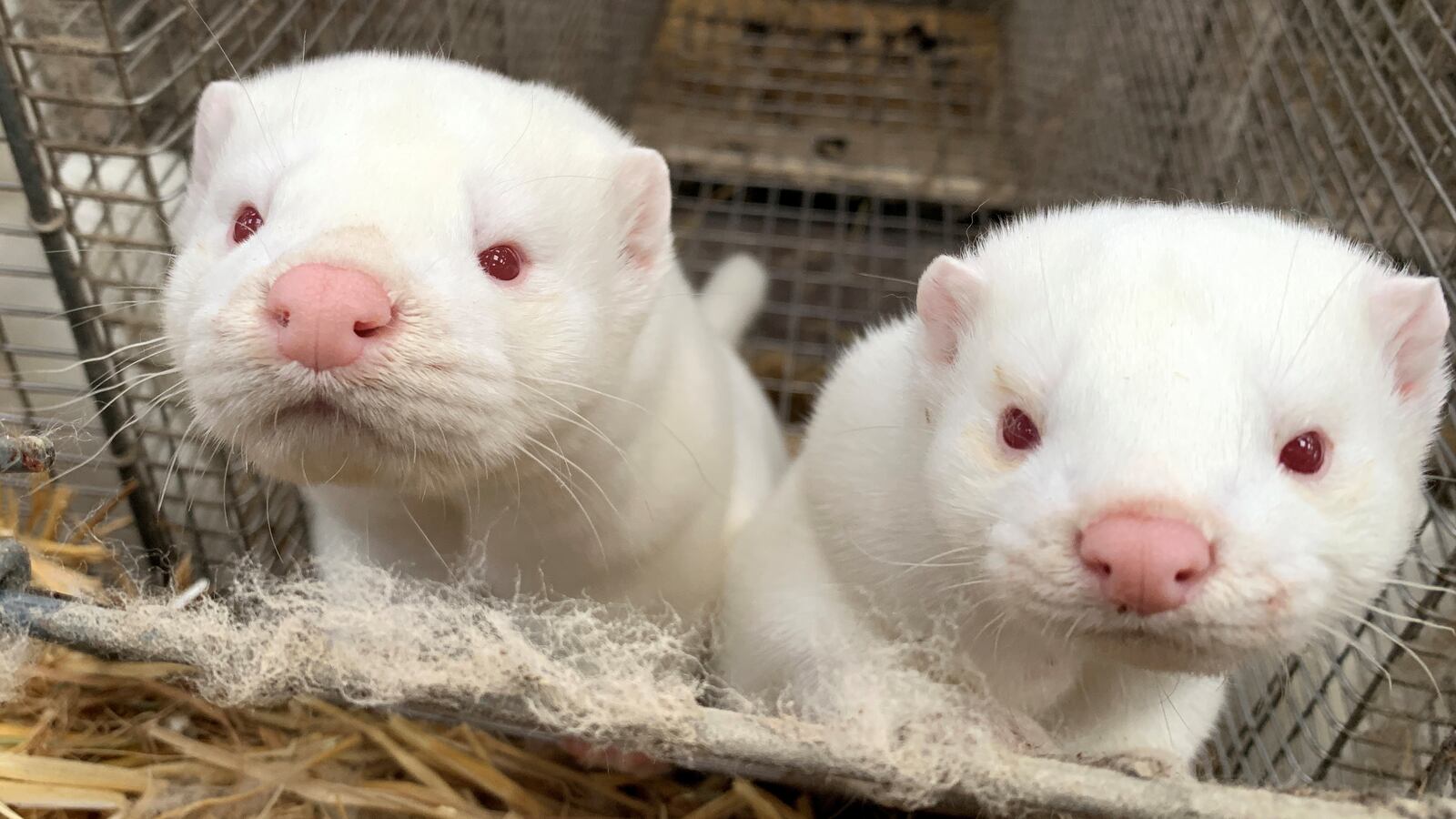ROME—There are few things that make scientists more nervous during an out-of-control pandemic than inter-species contagion of a mutated strain of a deadly virus. That’s why Denmark—the world’s largest supplier of fur—has taken the unprecedented decision to cull its entire mink population of some nearly 17 million animals.
The drastic step was taken after 12 incidents of a mutated strain of COVID-19 jumping to humans from the densely furred animals. Those people then spread it to nearly 400 others through human-to-human contagion. Denmark’s State Serum Institute reported that 214 of those had been recorded with “mink-related versions” of COVID-19.
Danish Prime Minister Mette Frederiksen warned that health experts say the mutated virus could weaken the human body’s ability to form antibodies, which would jeopardize the vaccines that are now in development. “We have a great responsibility toward our own population, but with the mutation that has now been found, we have an even greater responsibility for the rest of the world as well,” Frederiksen said at a press conference Wednesday when she announced the mass cull, underscoring concern that the mutated virus “may pose a risk to the effectiveness of a future vaccine.”
Kare Molbak, who heads the Danish State Serum Institute, warned of a “worst-case scenario” situation if the mutated strain creates “a new pandemic, starting all over again out of Denmark.”
So serious is this to the Danish government that new strict lockdown measures have been put in place around the mink farms where the culling is underway, though it is unclear if that is entirely because of the mink-to-human jump or because of the exponential jump in cases among those who work on the farms.

The move has angered fur producers who say the mink are actually being scapegoated to pacify nervous health officials and conspiracy theorists and that the government is using the pandemic to destroy the controversial industry. Not all scientists agree that the culling—which will be devastating to the global fur trade and cost Danish fur farmers some $785 million—is necessary.
Francois Balloux, a professor of computational systems biology and director of the University of College London Genetics Institute, told The Daily Beast that there are already thousands of mutations of COVID-19 across the world and that the mink mutation, while concerning to some extent, is not the real threat to vaccine efficacy. “The fact that a few have been observed in minks will not change the strains in circulation in humans,” he said. “If these strains were beneficial for the virus to infect its human host, they would be at high frequency already.”
He is concerned that while there are threads of truth to the mink mutation story, “it’s a bit unhinged” to warn that the mink will cause a new pandemic and “idiotic” to push the theory that the mink mutation will create a “vaccine escape” situation that will make the vaccines in development ineffective.
He argues that any future vaccine-escape mutations—which cause the coronavirus’ now infamous spike protein (those pillars on the virus molecules) to resist a vaccine’s neutralizing antibodies—are already out there and “they definitely will not be fueled by mink mutations.”
“We have to face it, there will in all likelihood be some mutations that will reduce efficacy,” he says. “We should worry about vaccine mutations at some point, but minks will not be the problem.”
Carl Bergstrom, an evolutionary biologist at the University of Washington, agrees that Denmark is overreacting. He told medical website Stat News that while the cross-species contagion is “worth watching,” it is not the nightmare scenario some fear much of the hype is pointing to. “This hits all the scary buttons,” he said, but it likely doesn’t mean a vaccine is under threat.
Angela Rasmussen, a virologist at Columbia University, agrees. She tweeted a word of caution after the mink story went viral. “So you may have heard concerns about the mink variant of #SARSCoV2 that was discovered in Denmark and is leading to the decision to cull all farmed minks in the country,” she wrote on Twitter. “This should not be a cause for panic.”
As many others have also argued, the Danish government may just actually want to get rid of mink farms and this mutation gives them a chance to do so. Balloux says that every single mutation that is possible has likely already emerged multiple times in someone. “There are billions and billions and billions of viruses, all possible mutations emerge all the time, and to the fact that you have one emerging in minks, I’d say ‘Who cares?’” adding that, “there is a good rationale for closing mink farms, but the mutation is not the right argument.”
Joanna Swabe of the Humane Society International calls the culling a move in the right direction. “Although not a ban on fur farming, this move signals the end of suffering for millions of animals confined to small wire cages on Danish fur farms solely for the purposes of a trivial fur fashion that no one needs,” she said in a statement Thursday.
The Danish government did not immediately respond to a request for comment and Denmark is not the first country to cull animals out of an abundance of caution sparked by nervous health officials. In the Netherlands and Spain, thousands of mink have been culled after outbreaks among workers in the fur processing plants.
Still, Balloux worries that creating unnecessary panic over the mink mutation is more dangerous than the mutation itself. “You can always come up with the worst-case scenario,” he says. “But creating this level of panic and fear over a blown out of proportion observation is just not what we need right now.”






